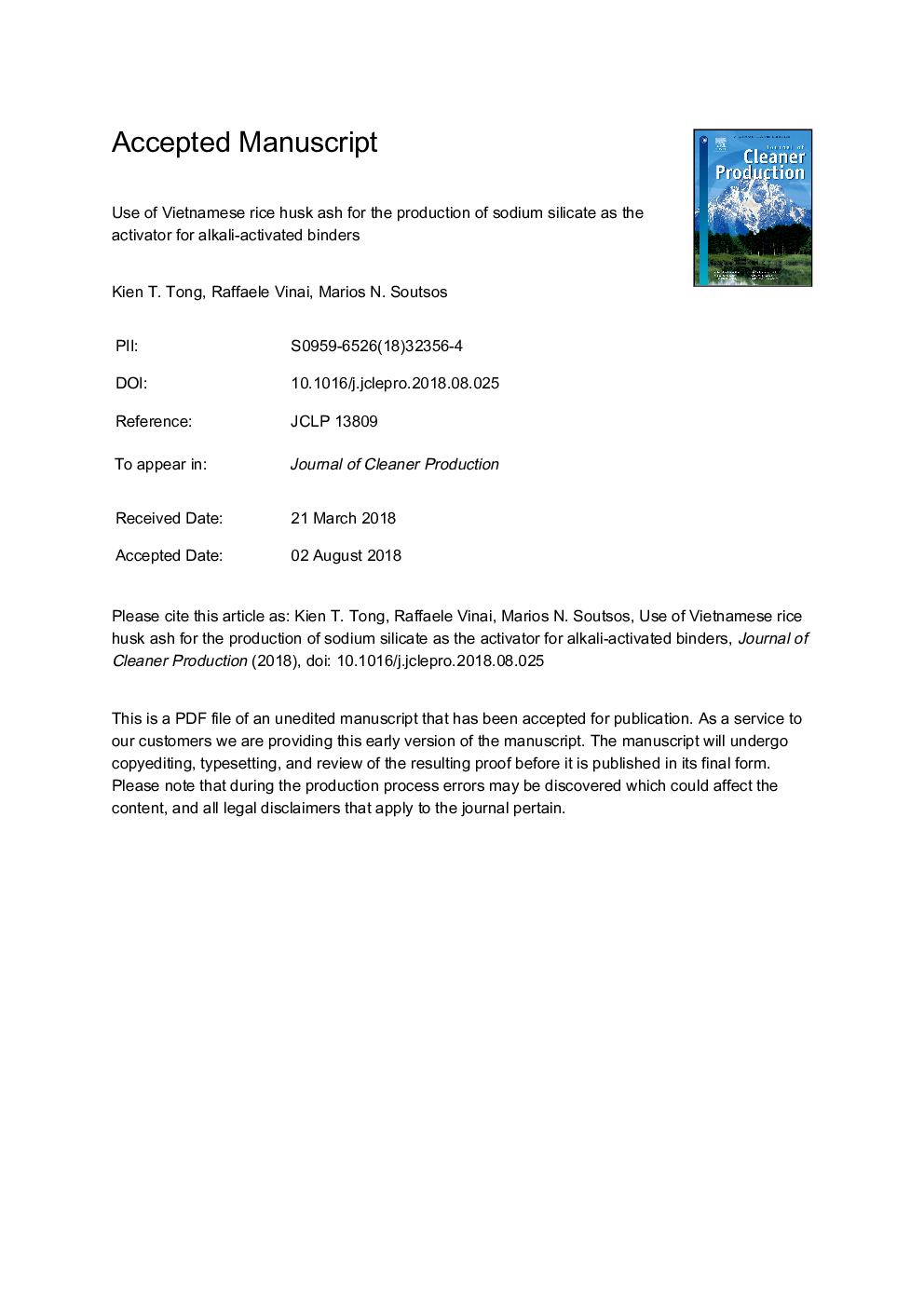| کد مقاله | کد نشریه | سال انتشار | مقاله انگلیسی | نسخه تمام متن |
|---|---|---|---|---|
| 8092709 | 1522051 | 2018 | 35 صفحه PDF | دانلود رایگان |
عنوان انگلیسی مقاله ISI
Use of Vietnamese rice husk ash for the production of sodium silicate as the activator for alkali-activated binders
ترجمه فارسی عنوان
استفاده از خاکستر پوسته برنجی ویتنامی برای تولید سیلیکات سدیم به عنوان فعال کننده گیرنده های فعال قلیایی
دانلود مقاله + سفارش ترجمه
دانلود مقاله ISI انگلیسی
رایگان برای ایرانیان
کلمات کلیدی
اتصال دهنده فعال قلیایی، فعال کننده های قلیایی برنج پوسته خاکستری، خاکستر پرواز سرباره کوره انفجار گرانول، تجزیه و تحلیل زیست محیطی ساده،
موضوعات مرتبط
مهندسی و علوم پایه
مهندسی انرژی
انرژی های تجدید پذیر، توسعه پایدار و محیط زیست
چکیده انگلیسی
Geopolymer and Alkali-Activated Binders (AAB) has recently emerged as a new, green material with the potential to replace Portland cement in several applications. They can reduce the CO2 footprint of concrete by up to 80% and this is in addition to being more durable in certain aggressive environments. However, commercial alkaline activators contribute significantly to the cost and CO2 footprint of AAB concrete mixes. This research investigated the production of a low cost, low environmental impact sodium silicate solution (waterglass) from Rice Husk Ash (RHA) and more specifically RHA from Vietnam. A hydrothermal process for the dissolution of RHA in sodium hydroxide solution was developed. Sodium hydroxide solution concentration, process temperature and duration were studied. Optimised procedure parameters were found to be: NaOH concentration 3M, heating temperature 80â¯Â°C and heating duration 3â¯h. The obtained solution was used for the production of AAB mortar made with a blend of fly ash and ground granulated blast furnace slag. Obtained compressive strength of mortar was in the range of 60â¯MPa at 28 days, matching the strength obtained from control samples produced with commercially available activators. Microstructural investigation (isothermal calorimetry, infrared spectroscopy, X-ray diffraction and thermogravimetric analysis) on pastes confirmed the equivalence between the solution produced with the optimised method and commercially available options. Cost analysis indicated that the proposed method could allow a reduction of almost 55% of the cost for the activation of AAB. Results from a simplified preliminary environmental analysis suggested increased sustainability of the RHA-derived solution when compared with commercially available waterglass.
ناشر
Database: Elsevier - ScienceDirect (ساینس دایرکت)
Journal: Journal of Cleaner Production - Volume 201, 10 November 2018, Pages 272-286
Journal: Journal of Cleaner Production - Volume 201, 10 November 2018, Pages 272-286
نویسندگان
Kien T. Tong, Raffaele Vinai, Marios N. Soutsos,
